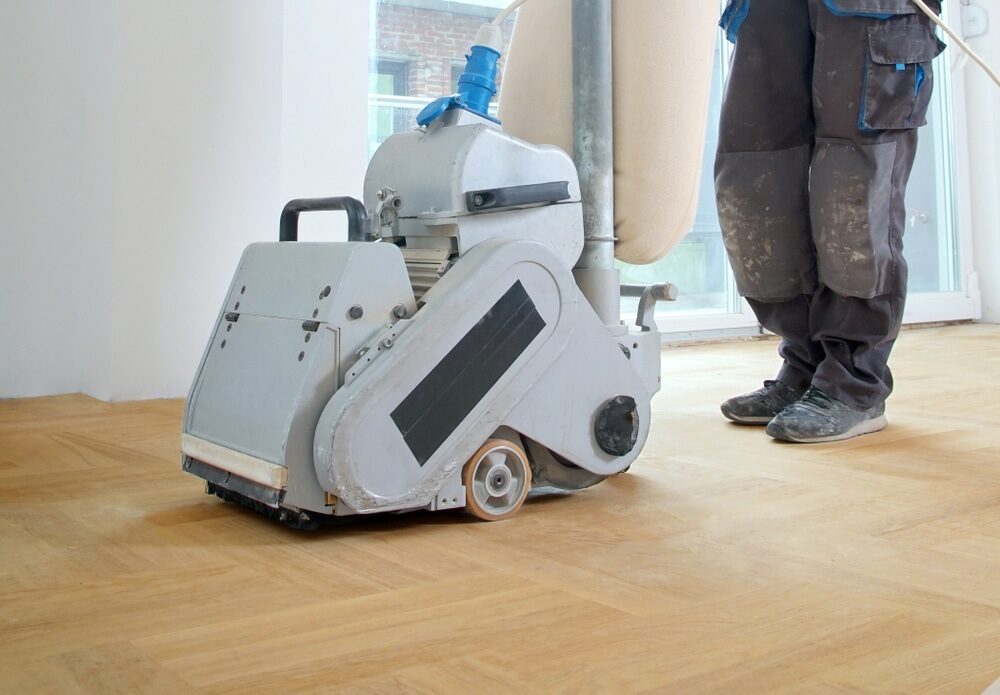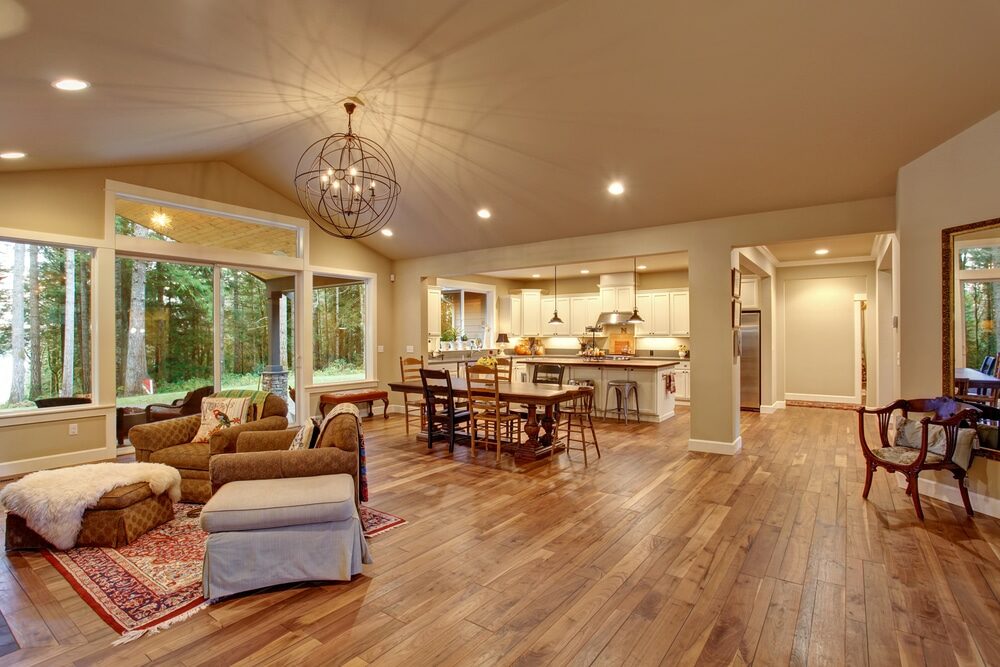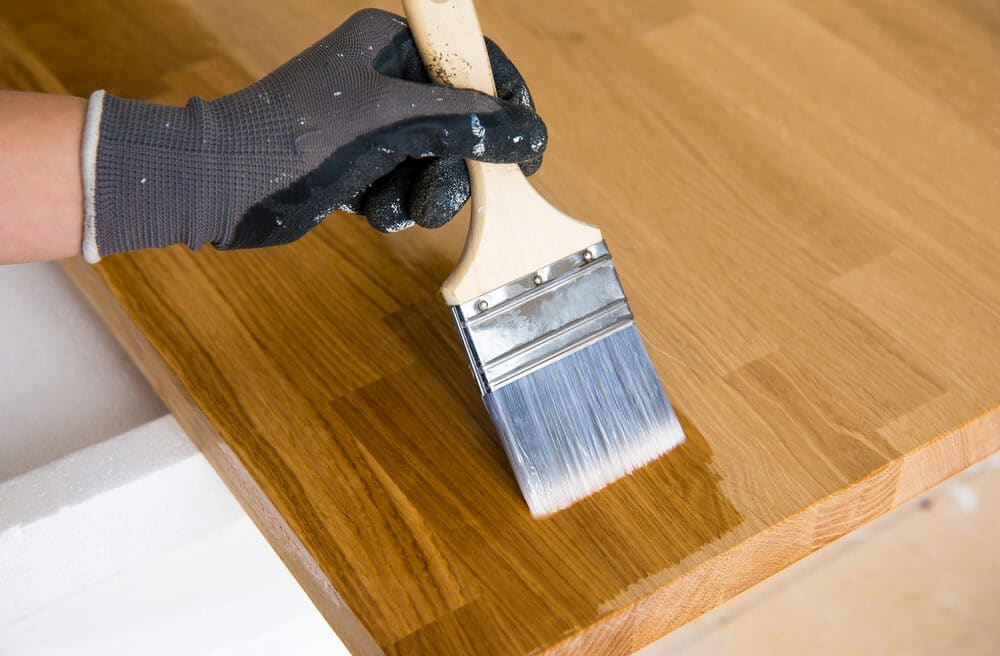London:
Nationwide:
Why is My Decking Turning White?
Posted on January 18, 2024
Deck Maintenance
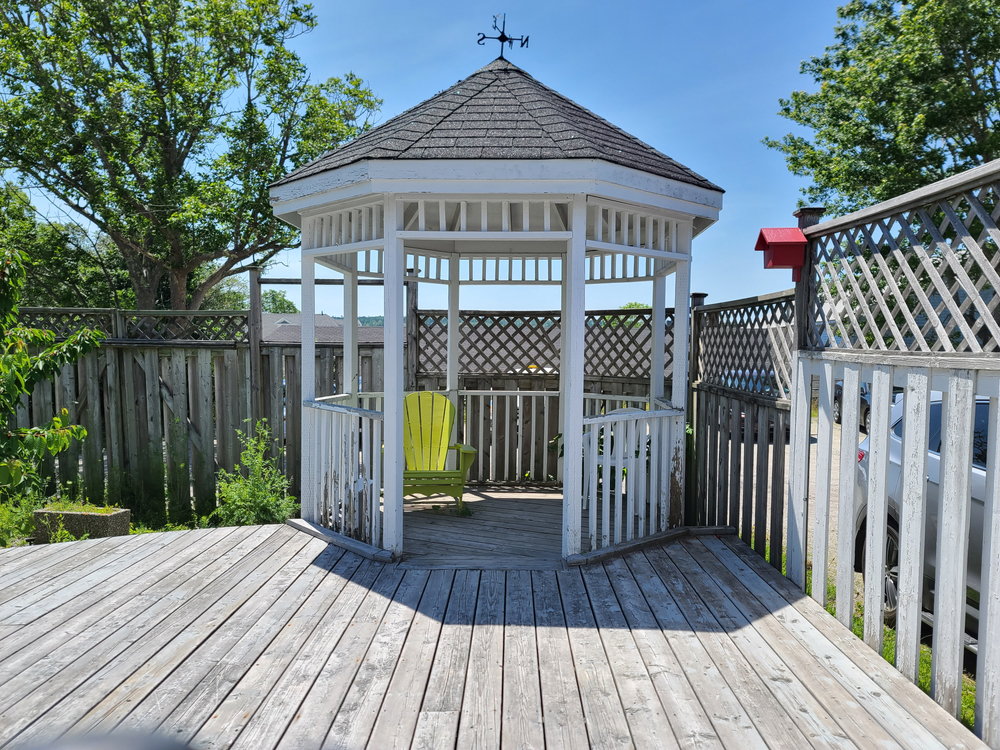
What Causes the Whitening of My Decking?
Welcome to our exploration of a common yet often puzzling issue faced by many homeowners and outdoor enthusiasts: decking turning white. Your deck is not just an extension of your home; it’s a place where memories are made, from summer barbecues to quiet nights under the stars. That’s why it’s disheartening when the rich, vibrant colours of your decking fade into a mysterious white hue.
This phenomenon raises several questions: What causes this discoloration? Is it a sign of damage? And more importantly, can it be fixed? In this post, we delve into the various factors that contribute to your decking turning white. From environmental impacts like sun exposure and moisture to the effects of certain cleaning chemicals, we’ll dissect each potential cause.
Understanding the root of the problem is the first step in finding a solution. By the end of this post, you will not only be equipped with knowledge of why this happens but also with practical tips and strategies to prevent and remedy it. Whether you’re a seasoned DIY enthusiast or new to deck maintenance, this guide aims to help you restore and maintain the beauty and longevity of your deck. So, let’s embark on this journey to uncover the secrets behind your deck’s unexpected colour change.
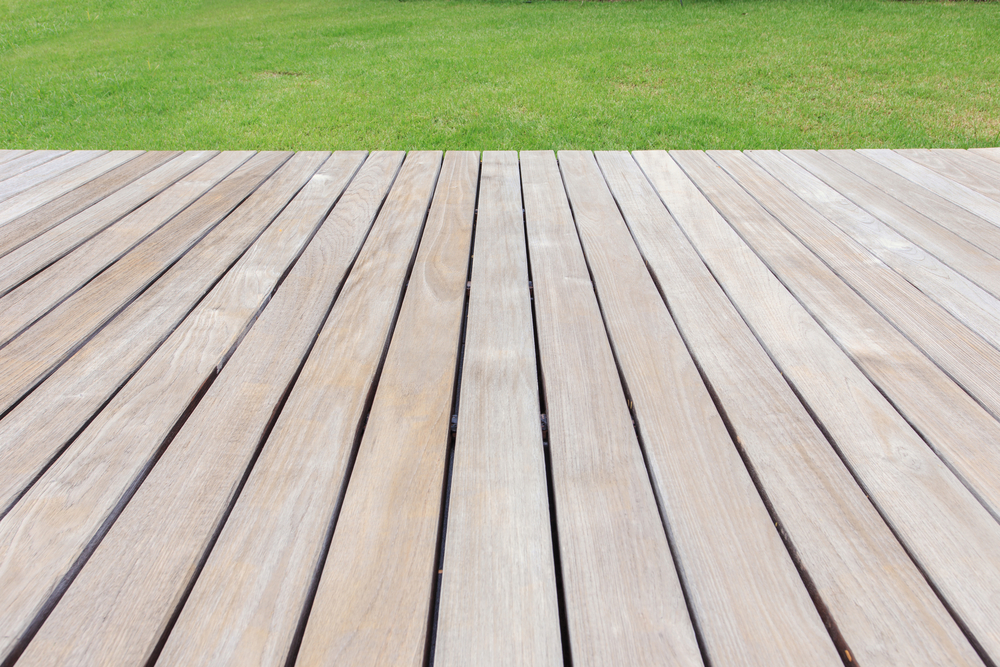
Common Causes of Decking Turning White
When it comes to maintaining the aesthetic and structural integrity of outdoor decking, understanding the causes behind discoloration is crucial. Here are some of the most common reasons why decking turns white:
1. Sun Exposure and UV Damage
One of the primary culprits for decking turning white is prolonged exposure to sunlight. Ultraviolet (UV) rays can break down the lignin in wood, which is the natural glue that holds wood fibres together. This breakdown leads to the surface fibres becoming loose and creating a greyish or white appearance. For composite decking, UV rays can cause the outer plastic layer to degrade and chalk, leading to a whitish hue.
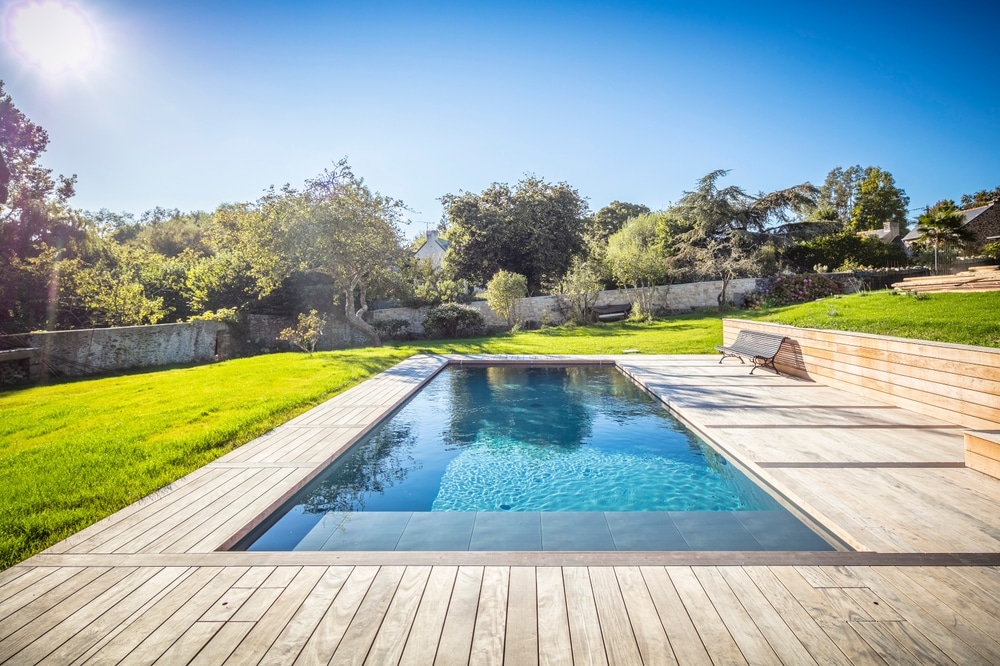
2. Water Damage and Moisture Issues
Decks are often exposed to varying weather conditions, and consistent moisture can significantly affect the wood. When water penetrates the wood, it can cause the fibres to swell and then contract as they dry, leading to a faded or whitened appearance. Prolonged exposure to moisture can also lead to mildew or mould growth, which can further discolour the wood.
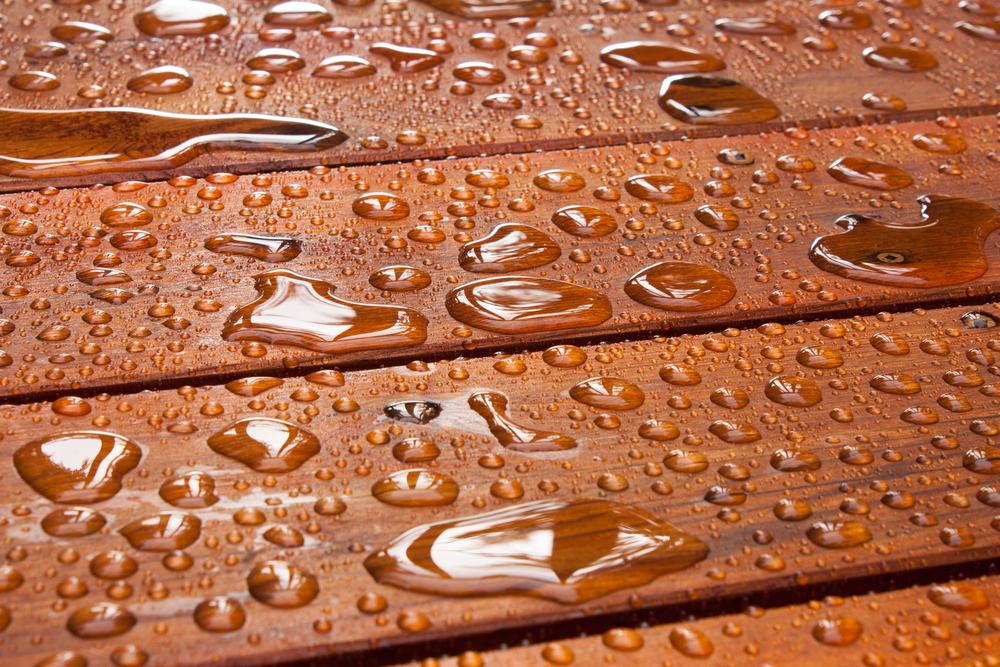
3. Wear and tear over time
Regular use and foot traffic can wear down the protective finishes on decking over time. This wear can expose the raw wood or material underneath, which is more susceptible to sun and water damage, leading to a whitened surface.

4. Chemical Reactions and Cleaners
Sometimes, the chemicals used for cleaning or treating a deck can cause discoloration. Harsh cleaners or improper use of cleaning solutions can strip away colour and protective coatings, leaving the decking looking bleached or white. Additionally, reactions between certain woods and specific metals, like iron in nails or hardware, can also lead to white spots or streaks.
5. Quality of Materials and Installation Issues
The quality of decking materials plays a significant role in how they weather over time. Lower-quality materials or improperly installed decking can be more susceptible to discoloration. This includes issues like inadequate sealing, poor choice of materials for a specific climate, or improper spacing for ventilation.
Each of these factors contributes to the common problem of decking turning white. By understanding these causes, homeowners can take proactive steps to protect their decks and address any issues before they become more serious. The following sections will delve deeper into each cause, offering insights and solutions to keep your deck looking its best.
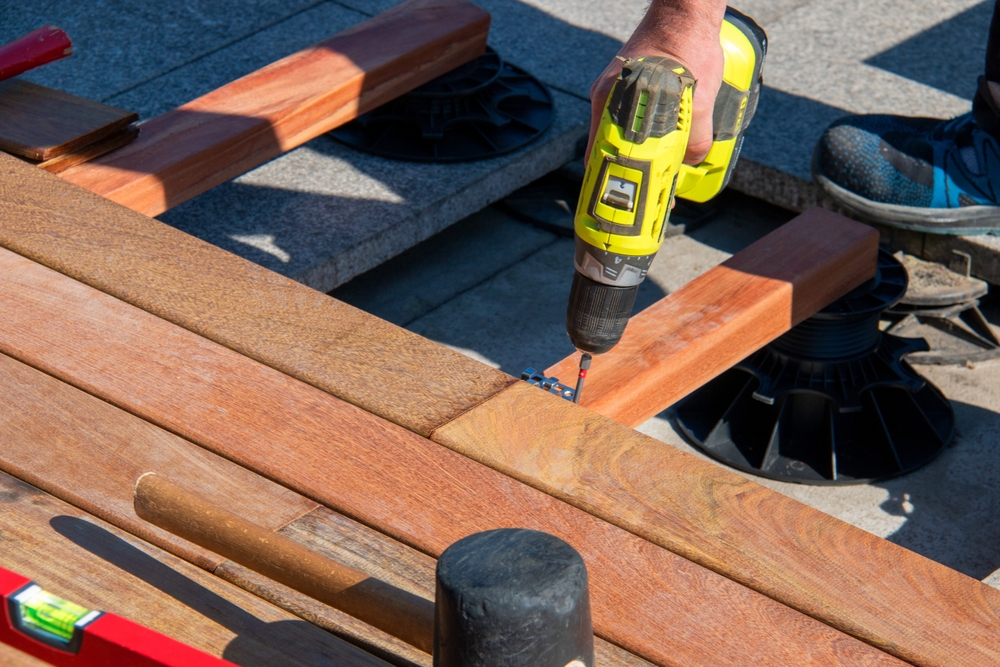
Detailed Analysis of Each Cause
To better understand why your decking might be turning white, let’s delve deeper into each of the common causes previously mentioned:
1. Sun exposure and UV damage
- How It Happens: Continuous exposure to the sun’s rays can cause significant damage to decking materials. UV rays penetrate the surface, breaking down the natural or synthetic components. In wood, this leads to the degradation of lignin, and in composite materials, it can cause the plastic elements to deteriorate.
- Effects on Decking: This UV damage results in the fibres of the wood becoming loose and frayed, giving a greyish-white appearance. For composite decking, the surface may become chalky and lose its colour.
- Preventive Measures: Regular application of UV-resistant sealants or stains can protect the decking from sun damage. Choosing UV-stabilised composite materials can also mitigate this issue.
2. Water damage and moisture issues
- How It Happens: Water exposure, especially if persistent, can cause wooden decks to absorb moisture. This leads to swelling and shrinking as the wood dries, which can fray and damage the surface fibres.
- Effects on Decking: The result is often a faded, white appearance and, in some cases, the growth of mould or mildew, which further discolours the wood.
- Preventive Measures: Ensuring proper sealing and drainage can help mitigate water damage. Choosing moisture-resistant materials and maintaining a regular cleaning schedule to prevent mould buildup are also effective strategies.
3. Wear and tear over time
- How It Happens: Regular use of a deck subjects it to physical wear and tear. This can erode the protective layers that keep the colour and integrity of the decking material intact.
- Effects on Decking: The erosion of these layers exposes the raw material underneath, which is more vulnerable to environmental factors, leading to whitening or greying.
- Preventive Measures: Applying a fresh coat of sealant or paint periodically can help protect the deck from wear and tear.
4. Chemical reactions and cleaners
- How It Happens: Using harsh chemicals or cleaners can strip away the colour and protective coatings on decking materials. Certain wood types may also react with metals, like iron, causing discoloration.
- Effects on Decking: This often results in a bleached appearance or white spots where the cleaner was applied.
- Preventive Measures: Using appropriate, mild cleaners designed for decking and ensuring that any metal fixtures are compatible with the wood type can help avoid these issues.
5. Quality of Materials and Installation Issues
- How It Happens: Lower-quality materials or improper installation can leave decks more susceptible to environmental damage.
- Effects on Decking: These decks may discolour more quickly or unevenly, with patches turning white due to inadequate protection or ventilation.
- Preventive Measures: Choosing high-quality, appropriate materials for your climate and ensuring proper installation are crucial for the longevity of the deck.
Preventative Measures and Maintenance Tips
Maintaining your deck and preventing it from turning white involves a combination of choosing the right materials, regular maintenance, and applying protective treatments. Here are some key tips to help you keep your deck in pristine condition:
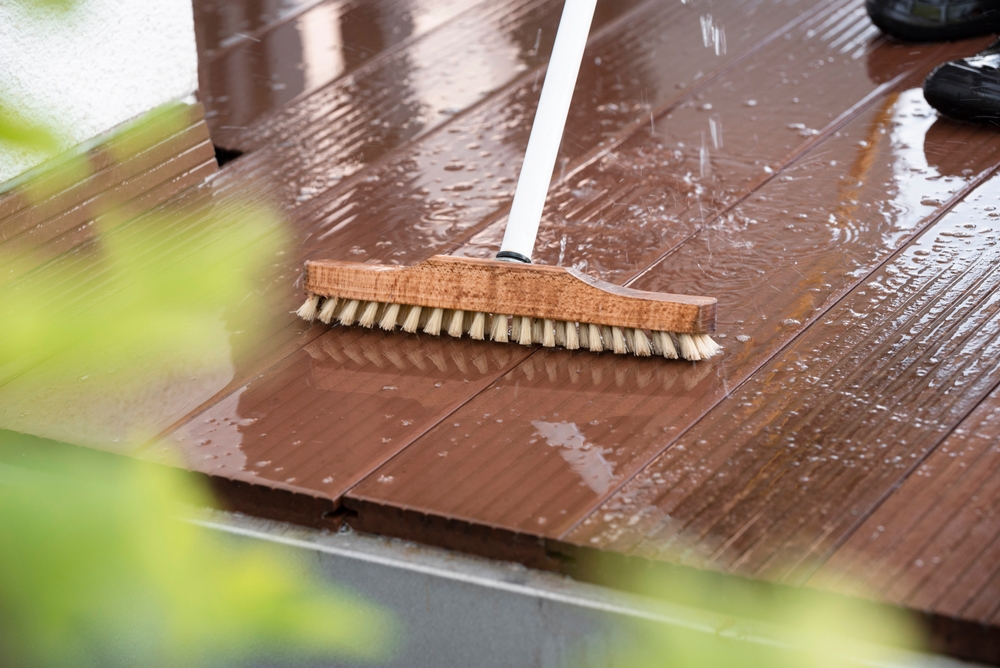
1. Choosing the Right Materials for Your Deck
- Opt for high-quality, durable materials suitable for your climate. Woods like cedar, redwood, or pressure-treated woods are known for their resilience.
- If selecting composite decking, choose UV-stabilised options to minimise fading.
- Consider pre-treated wood that offers additional resistance to moisture and sun damage.
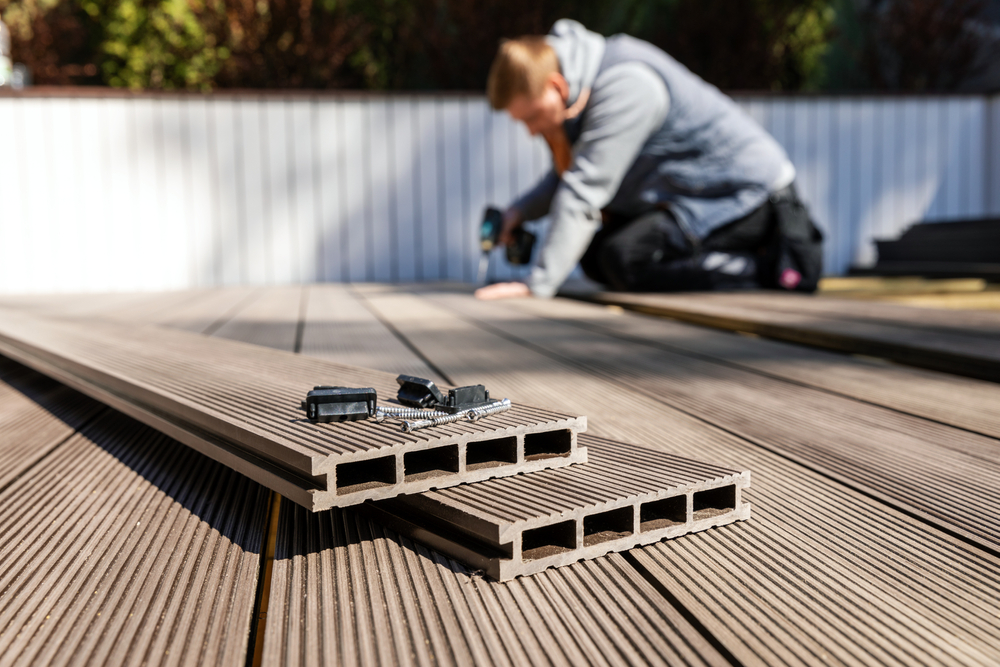
2. Regular Cleaning and Maintenance Practices
- Clean your deck regularly, using appropriate cleaners. Avoid harsh chemicals that can strip away protective coatings.
- Remove debris like leaves and twigs promptly, as they can trap moisture and promote mould growth.
- Inspect your deck periodically for signs of wear, loose nails, or other issues that may need repair.
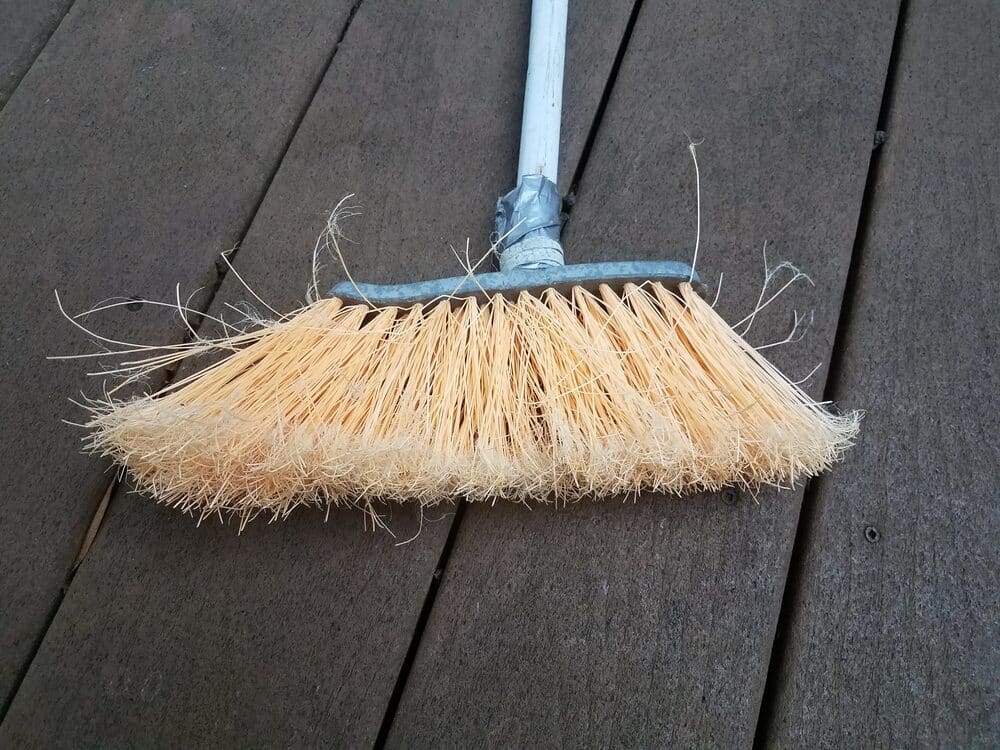
3. Protective Treatments and Sealants
- Apply a water-repellent sealant to protect against moisture damage. This should ideally be done every 1–2 years, depending on weather conditions and deck usage.
- Consider using a UV-resistant stain or sealant to shield the deck from sun damage.
- For composite decks, follow the manufacturer’s recommendations for sealants and treatments.
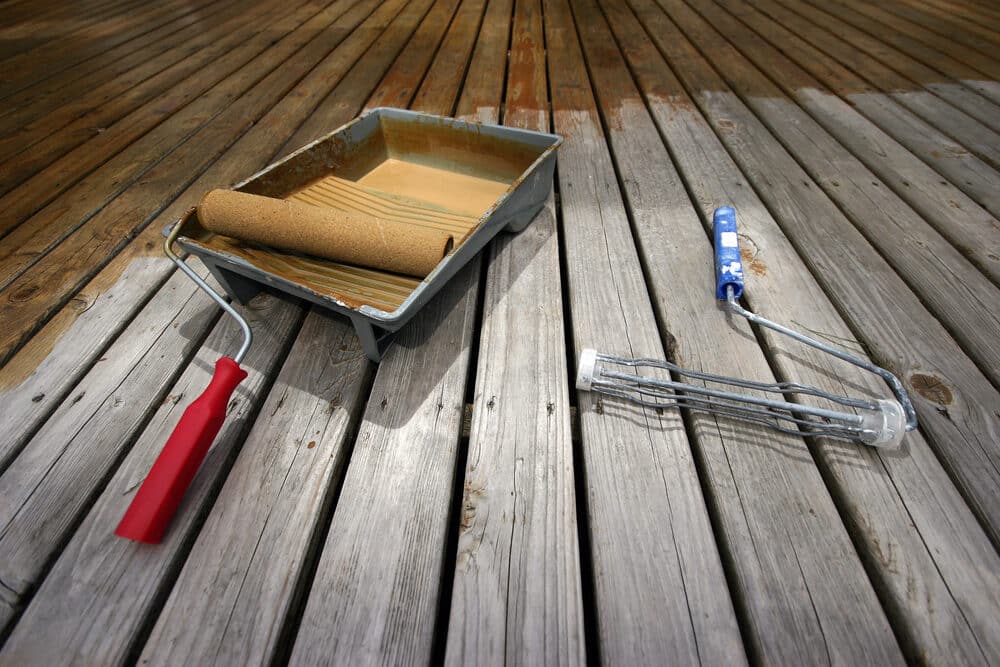
4. Tips for reducing sun and water damage
- Install shades, awnings, or pergolas to reduce direct sun exposure.
- Ensure proper drainage around your deck to prevent water accumulation.
- Position gutters and downspouts to direct water away from the decking area.
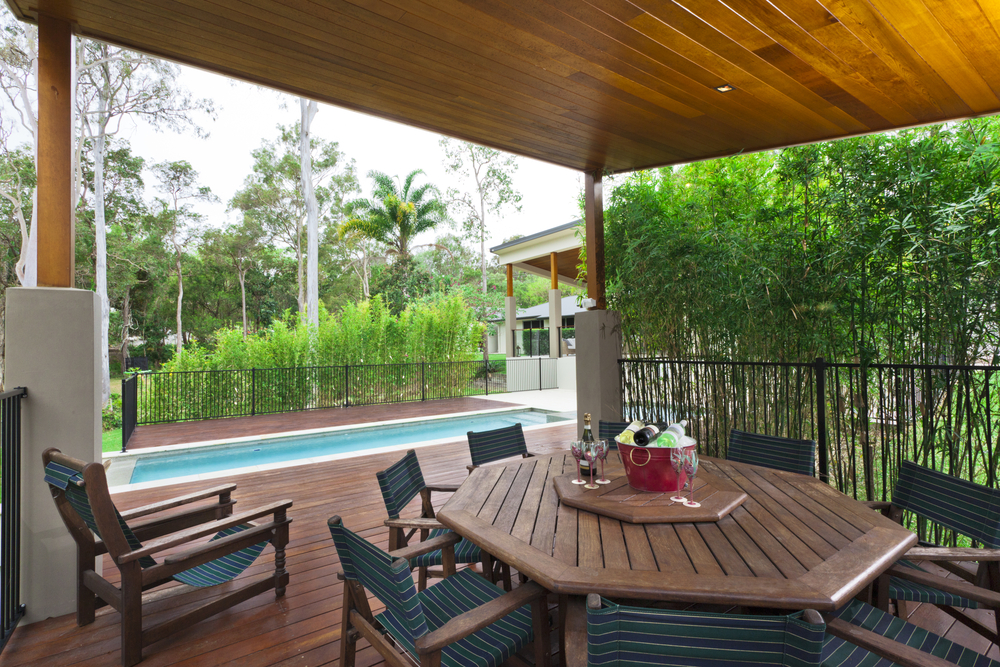
5. Seasonal Care and Maintenance
- Prepare your deck for winter by cleaning it thoroughly and applying a fresh coat of sealant if necessary.
- In spring, check for any damage caused by cold and wet conditions and address it promptly.
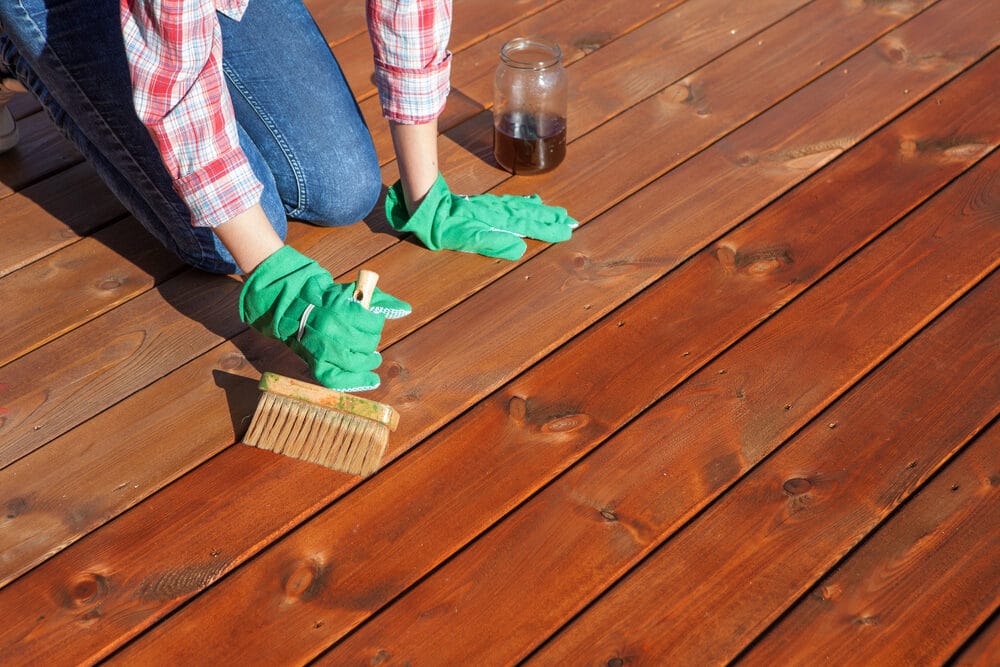
6. Addressing mould and mildew
- Use mildew-resistant treatments if your deck is in a shaded or moist area.
- Regularly clean your deck with solutions specifically designed to combat mould and mildew.
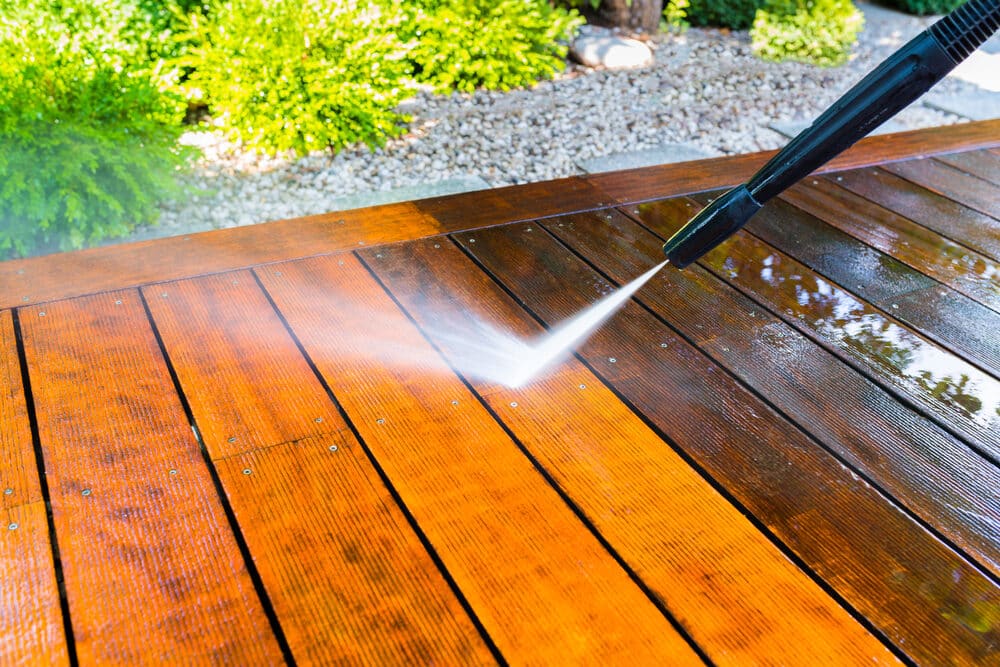
Repair and restoration solutions
If your deck has already started showing signs of turning white, don’t worry. There are several effective methods to repair and restore its original appearance. Here’s a guide on how to tackle this issue:
1. DIY Methods for Treating White Patches
- Cleaning: Start by thoroughly cleaning the deck. Use a deck cleaner suitable for your deck’s material (wood or composite). For wood decks, a mixture of mild detergent and water can be effective. Avoid using bleach, which can further damage the wood.
- Sanding: If the whitening is due to surface wear or UV damage, lightly sanding the affected areas can help. Use fine-grit sandpaper and sand in the direction of the wood grain. This is mainly applicable to wooden decks.
- Restorative Products: There are various deck restoration products available that can help revive the original colour of the wood or composite material. Choose a product that’s compatible with your decking.
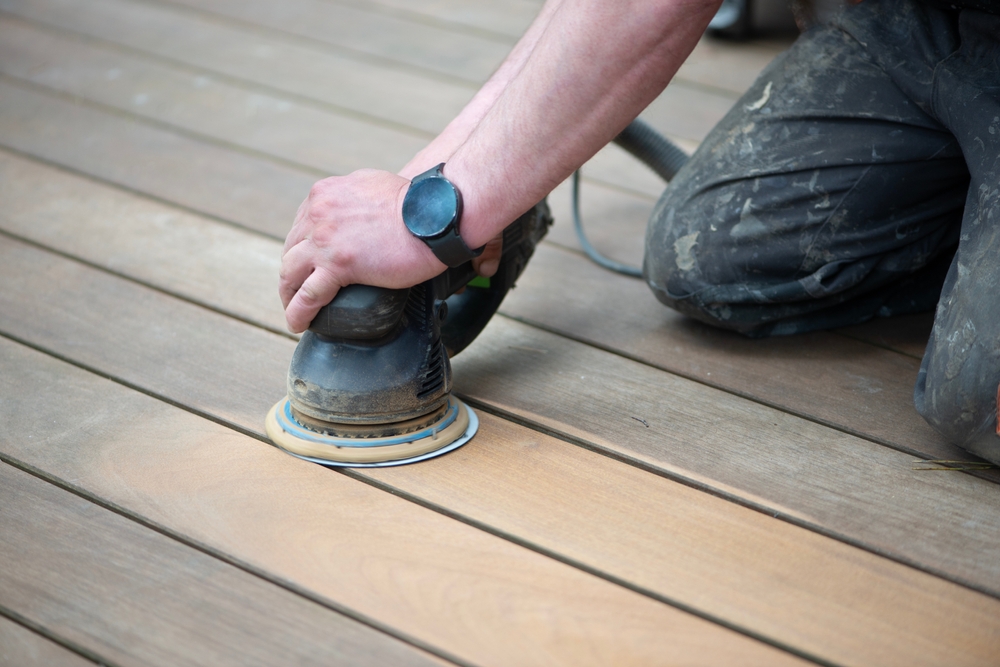
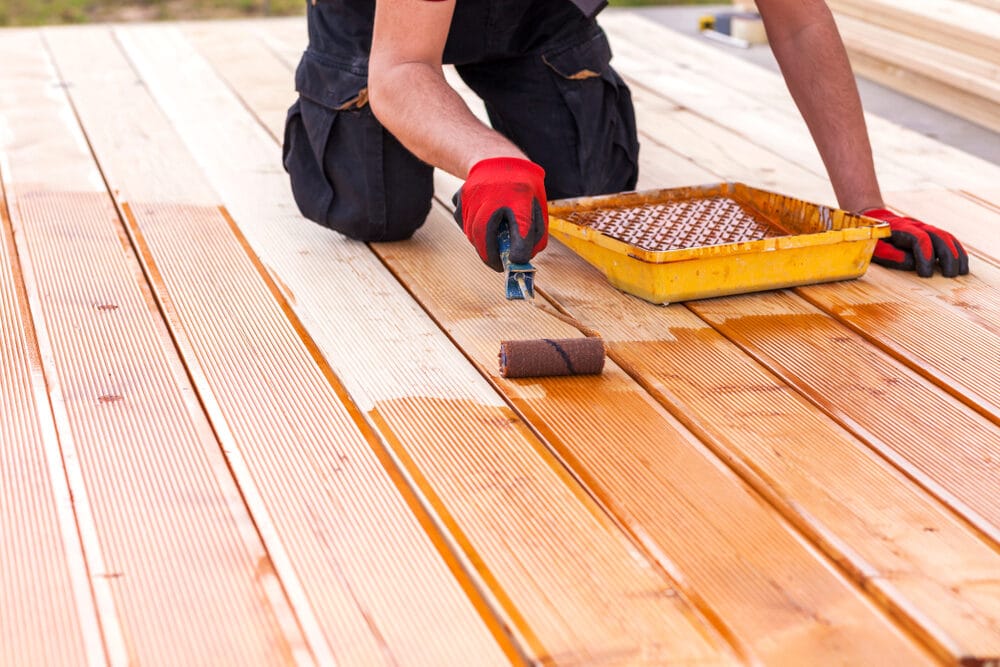
2. When to Seek Professional Help
- If the damage is extensive or the deck is structurally compromised, it’s wise to seek professional assistance. This is especially important for issues related to the deck’s foundation or support structure.
- Professionals can also provide services like deep cleaning, power washing, and applying high-grade sealants or stains, which might be beyond the scope of DIY methods.

3. Long-term Solutions for Deck Preservation
- Regular Sealing and Staining: After restoring your deck, apply a high-quality sealant or stain. This should be part of your regular deck maintenance routine, typically every 1-2 years.
- Upgrading Materials: If restoration is not feasible or the deck continues to deteriorate, consider upgrading to more durable materials. Newer composite materials offer greater resistance to UV and moisture damage and require less maintenance.
- Improved Design Elements: Sometimes, adding elements like railings, shades, or new decking boards can not only repair existing damage but also prevent future issues.
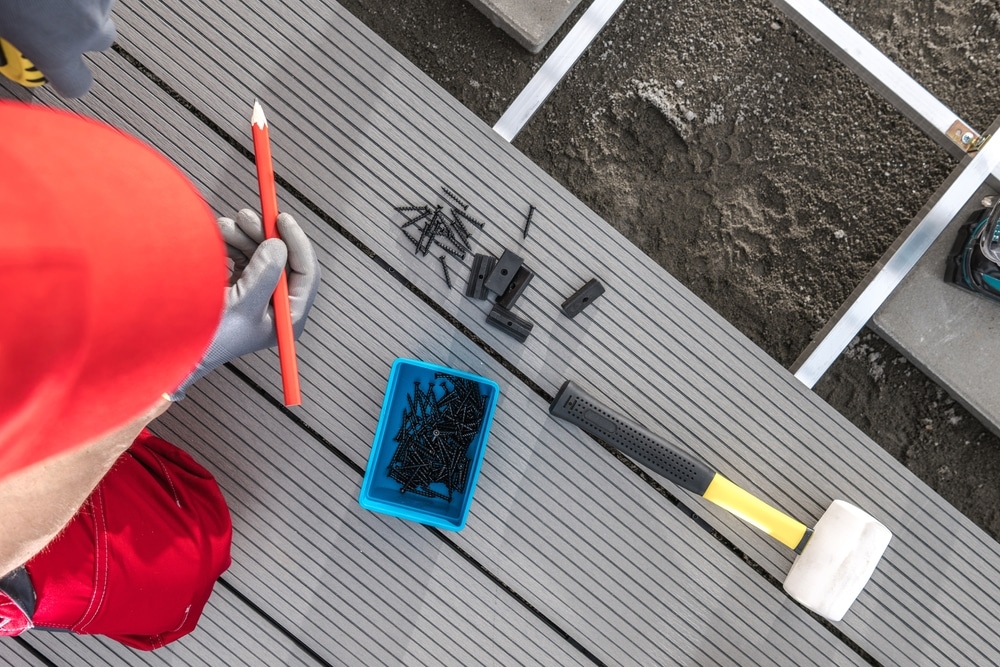
4. Preventive Maintenance Post-Restoration
- Continue with regular cleaning and inspection routines even after restoring your deck. Preventive maintenance plays a crucial role in preserving its condition over the long term.
- Monitor for any signs of recurrent issues and address them promptly to avoid significant repairs in the future.
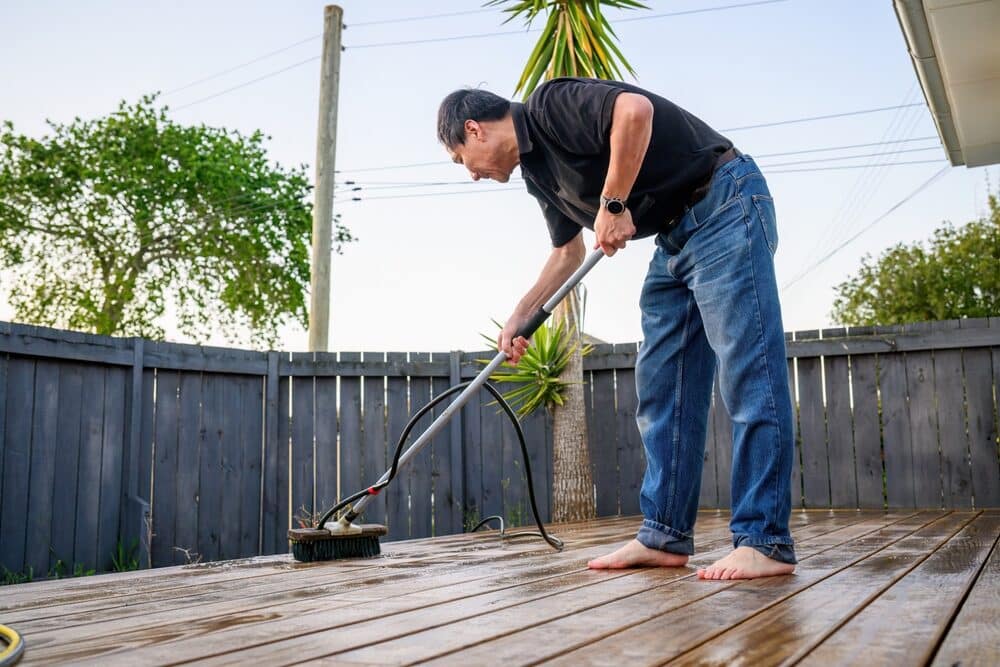
Conclusion
As we wrap up our exploration of the common issue of decking turning white, it’s clear that this is a manageable problem with the right knowledge and approach. We’ve delved into the various causes of this phenomenon, from sun exposure and moisture damage to wear and tear and chemical reactions. Understanding these causes is the first step in both preventing and addressing the issue.
The importance of regular deck maintenance cannot be overstated. By choosing appropriate materials, applying protective treatments, and adhering to a consistent cleaning and maintenance schedule, you can significantly prolong the life and appearance of your deck. When problems do arise, we’ve seen that there are both DIY and professional solutions available to restore your deck to its former glory.
Remember, your deck is more than just a structure; it’s a space for enjoyment, relaxation, and making memories. Taking care of it not only preserves its aesthetic appeal but also its structural integrity, ensuring it remains a safe and enjoyable space for years to come.
Finally, whether you’re dealing with a minor discoloration issue or a more significant repair job, the key is to act promptly and thoughtfully. Regular care and timely interventions will keep your deck looking great and functioning well, making it a lasting part of your home where countless more memories can be made.
Thank you for joining us on this journey to understand and solve the mystery of decking turning white. May your decks remain vibrant and inviting, a testament to the care and effort you put into maintaining them.

Sanding
We provide virtually dust-free sanding with our continuous belt machinery with mobile extraction units, giving you a safer environment for your family.
Oiling
This organic finish not only adds beauty to your home but also has exceptional water-repellent characteristics, making it easier to clean and maintain.
Waxing
This natural floor finish offers the softest and most mellow appearance – and leaves your floor able to breath.
Buffing
Using soft buffing machines (and hand-polishing where required) will bring a wonderful sheen to your newly-finished floor.
Repairs
We offer a full assessment of your wooden floors to determine what repairs are needed to provide the perfect working surface for the later stages of sanding, staining and sealing.
Restoration
We offer a comprehensive restoration process designed to address floors that are improperly fitted or damaged over time through wear and tear.
Request a fixed price quote for your wood floor restoration now
Simply enter your postcode below to get started.
Services
Wood Floor Sanding Wood Floor Restoration Wood Floor Scratch Repair Squeaky Wood Floor Repair Parquet Floor Sanding Parquet Floor Restoration Commercial Floor Sanding Church Floor Sanding Community Centre Floor Sanding School Floor Sanding Gap Filling Gap Filling with ResinCopyright © Mr Sander®
Privacy & Cookies Terms & Conditions Complaints Procedure Cancellation Rights Sitemap